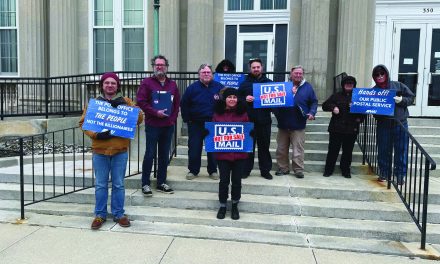In a major legal confrontation with the Trump Administration, several federal employee unions have filed a lawsuit challenging a March 27 executive order that significantly restricts collective bargaining rights at 18 federal agencies. Citing national security concerns as justification, the order effectively dismantles negotiated workplace protections and attempts to strip unions of critical representation tools. Unions argue that this justification is a pretext for union busting, rather than a legitimate security need.
The Executive Order and Its Impact
The executive order targets collective bargaining agreements (CBAs) at a wide range of federal agencies, including the Department of Education, the Environmental Protection Agency, and the Social Security Administration. It authorizes agency heads to unilaterally roll back union rights, limit the time union representatives can spend on official union business, and shortens the timeline for grievance and disciplinary procedures.
Union leaders say the order undermines decades of legally established labor relations frameworks under the Federal Service Labor-Management Relations Statute (FSLMRS), which ensures that federal employees can unionize and engage in collective bargaining over working conditions. The order also effectively nullifies existing CBAs by allowing agencies to implement changes without meaningful negotiations.
Unions Taking Legal Action
Several major unions are part of the legal effort to block the order, including:
- American Federation of Government Employees (AFGE): The largest federal employee union, representing over 700,000 government workers, including at the Department of Veterans Affairs, Department of Defense, and other key agencies.
- National Federation of Federal Employees (NFFE): An affiliate of the International Association of Machinists, the NFFE represents workers in dozens of agencies.
- National Treasury Employees Union (NTEU): Representing employees at the IRS, Customs and Border Protection, and others, the NTEU has vocally opposed the administration’s labor policies.
- American Federation of State, County and Municipal Employees (AFSCME): While better known for representing state and local workers, AFSCME also represents federal employees affected by the order.
These unions have argued that the administration’s actions violate the law by bypassing established procedures for modifying or terminating labor agreements, and by infringing on employees’ statutory rights to representation and collective action.
Challenging the National Security Justification
The Trump Administration has defended the executive order by invoking national security, claiming that reducing union influence and expediting disciplinary actions are necessary to maintain the integrity and efficiency of federal agencies. However, union leaders and legal experts contend that this rationale is both overbroad and unsupported by evidence.
Critics point out that many of the targeted agencies, such as the Education Department and the EPA, are civilian in nature and do not engage in national security operations. Furthermore, the Federal Labor Relations Authority (FLRA), which oversees labor disputes in the federal sector, has long maintained that collective bargaining does not inherently conflict with agency missions, including those related to national security.
“The national security argument is a smokescreen,” said AFGE National President Everett Kelley. “This order is not about protecting our country—it’s about silencing the voices of the people who serve it every day. It strips workers of the ability to advocate for fair treatment, safe workplaces, and the rights they’re entitled to under federal law.”
Broader Implications
If the executive order is upheld, it could set a precedent for executive overreach into labor relations and undermine the stability of federal labor-management partnerships. Legal scholars warn that it might also embolden future administrations to cite vague security concerns as a pretext to erode workers’ rights more broadly.
Conversely, if the courts strike it down, it would reaffirm the legal protections for federal unions and the requirement that any substantial changes to employee representation be negotiated in good faith.
The lawsuit is currently proceeding through the federal court system, and its outcome could reshape the landscape of labor rights in the federal sector for years to come. For now, union leaders are urging their members and the public to stay informed and engaged as they fight to preserve the voice of federal workers in their workplaces.











